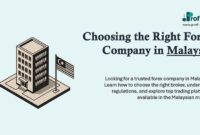In the high-stakes world of leveraged trading—particularly in the futures and foreign exchange (forex) markets—the concept of initial margin stands as a critical safeguard. Far from being a mere formality, the initial margin is the upfront collateral required by brokers or clearing firms before a trader is permitted to open a leveraged position.
At its core, the initial margin serves two primary purposes: to mitigate credit risk for brokers and to ensure the trader’s commitment to covering potential losses. It is, in effect, a financial buffer designed to maintain the integrity of the market and the stability of counterparties in volatile environments.
Dual Purpose: Collateral and Good-Faith Commitment
The initial margin acts as both a performance guarantee and a good-faith deposit. Whether an account is managed by a full-service brokerage or operated independently by the investor, the margin ensures that traders have skin in the game. According to the U.S. Commodity Futures Trading Commission (CFTC):
“Initial margin is not intended to cover the total potential loss on a position, but rather to limit the exposure of the clearinghouse and its participants in the event of default.”
— CFTC Risk Management Advisory Committee
This approach not only protects the broker or clearing firm, but also contributes to the broader goal of financial market stability.
Maintenance Margin: Sustaining the Position
Once a position is opened, the trader must maintain a minimum margin level known as the maintenance margin. This level is typically lower than the initial requirement and allows for moderate price fluctuations without triggering a margin call.
For example, if a trader opens a $100,000 position in EUR/USD with an initial margin requirement of 5%, they would need to post $5,000. However, the maintenance margin might be set at 2.5%—allowing the position to absorb a $2,500 adverse move before the trader is required to deposit additional funds.
This buffer system allows for greater trading flexibility while still maintaining adequate protection for brokers and clearinghouses.
Risk-Based Adjustments: When Initial and Maintenance Margins Align
In some high-risk scenarios—such as trading volatile assets, exotic currency pairs, or during periods of extreme market stress—regulators or brokers may set the maintenance margin equal to or even above the initial requirement to reduce potential systemic exposure.
This was evident during the COVID-19 market turbulence and the Russia-Ukraine conflict, where brokerages adjusted margin requirements across numerous instruments. The Financial Conduct Authority (FCA) in the U.K. remarked:
“Firms must assess whether margin levels are commensurate with the risks presented by each client’s activity. Higher margins may be appropriate for illiquid or highly volatile instruments.”
— FCA Handbook, Margin Requirements Section
Similarly, the Cyprus Securities and Exchange Commission (CySEC) has enforced stringent margin policies for brokers operating within its jurisdiction, especially those offering Contracts for Difference (CFDs) to retail clients. In a 2023 circular, CySEC stated:
“Initial margin requirements serve as the primary line of defense in ensuring clients can meet their obligations, particularly during abrupt market moves.”
— CySEC Circular C548
Real-World Example: Forex Trading on a Major Platform
Consider a retail forex trader using MetaTrader 4 through a European broker regulated by CySEC. The trader opens a position in GBP/JPY worth €50,000. If the initial margin requirement is 3.33% (30:1 leverage), the trader must deposit €1,665 upfront. Should the market move against the trader and their equity falls below the 50% maintenance level, a margin call is issued, prompting the trader to top up their account or face automatic liquidation.
Such mechanisms are not only automated but mandated by regulatory frameworks across the EU and U.K., designed to prevent uncontrolled losses.
Conclusion: A Strategic Risk Management Tool
The initial margin is not merely a procedural hurdle—it is a strategic tool in managing counterparty risk, ensuring market stability, and enforcing discipline among traders. As regulators worldwide continue to strengthen oversight on leveraged products, understanding the nuances of initial and maintenance margins becomes essential for anyone engaging in margin-based trading.
Whether you’re a novice retail investor or a seasoned institutional trader, respecting these requirements is not just a matter of compliance—it’s a vital part of sustainable financial strategy in today’s dynamic markets.


